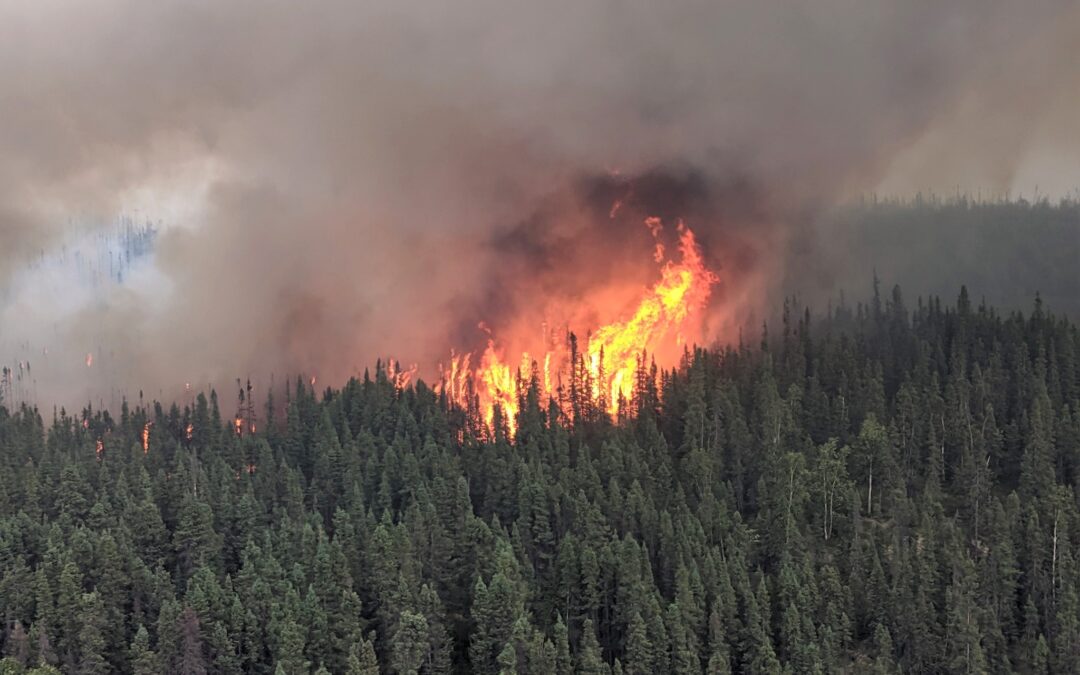By: Matteo Cimellaro, Local Journalism Initiative Reporter, Canada’s National Observer
Indigenous communities remain on the front lines of the climate crisis, suffering the worst effects of climate disaster and tragedy.
Take the current wildfire season: earlier this week, there were over 6,000 Indigenous people evacuated due to wildfires, with 17 First Nations impacted by one of the worst wildfire seasons on record, according to Indigenous Services Canada. On Thursday, those numbers dropped to 3,732 evacuees, with 10 First Nations impacted, mostly in remote, rural areas.
Indigenous communities represent only five per cent of the population in Canada, and yet they represent 42 per cent of wildland fire evacuations, according to Ottawa’s National Adaptation Strategy, an action plan that addresses worsening climate outcomes alongside the provinces, territories and Indigenous partners.
Colonialism has historically curtailed and even criminalized Indigenous fire stewardship. Now, through the adaptation strategy, Ottawa says it is committed to several fundamental initiatives that may invest in Indigenous knowledge systems like fire stewardship.
It’s still unclear how much of the $1.6 billion allocated for the adaptation strategy will be earmarked for Indigenous communities. However, it does put weight on Indigenous methods to reduce the impacts of the climate crisis, which some critics have linked to colonialism and environmental racism.
Here are two actions related to the adaptation plan to note moving forward:
Wildfire Resilient Futures Initiative and Good Burns
The Wildfire Resilient Futures Initiative, announced last November, will create a centre of excellence for wildland fire innovation and resilience. Innovation will be fostered by sharing knowledge across borders and supporting Indigenous fire stewardship.
It’s still unclear how this initiative will support Indigenous fire stewardship when laws and mandates still restrict when a community can burn for themselves. For example, in Ontario, First Nations often must obtain a permit from the province and work with provincial firefighting crews before conducting a burn.
Meanwhile, California stripped away liability risk in 2021, which criminalized Indigenous burning methods. The law made it easier for Indigenous Peoples and private citizens to burn “good fires” before the wildland season begins. The burning method can be used to remove flammable brush or to nurture the growth of harvestable flora.
It’s still unclear if similar laws will emerge, given the provinces control the majority of Crown land. It’s also unclear if Ottawa would support a law similar to California’s.
Natural Resources Canada did return Canada’s National Observer request for an interview by the time of publication.
Creation of Canadian Water Agency and clean water for Indigenous communities
The Canada Water Agency was given an $85-million runway to develop its role to ensure clean, fresh water across Canada. Clean water is considered a vital piece of Canada’s implementation of the United Nations Declaration on the Rights of Indigenous Peoples and the climate adaptation strategy.
Funding also includes $650 million over 10 years to clean up the largest freshwater lakes and rivers, like the Great Lakes, Lake Winnipeg and the St. Lawrence. It was also given a $22.6-million runway to better co-ordinate efforts to protect freshwater.
Fresh water is essential for clean harvesting outcomes within Indigenous communities. Ancestral foods such as fish and animals can be a source of contamination, such as what happened in northern Alberta following a major tailings pond leak last year.
